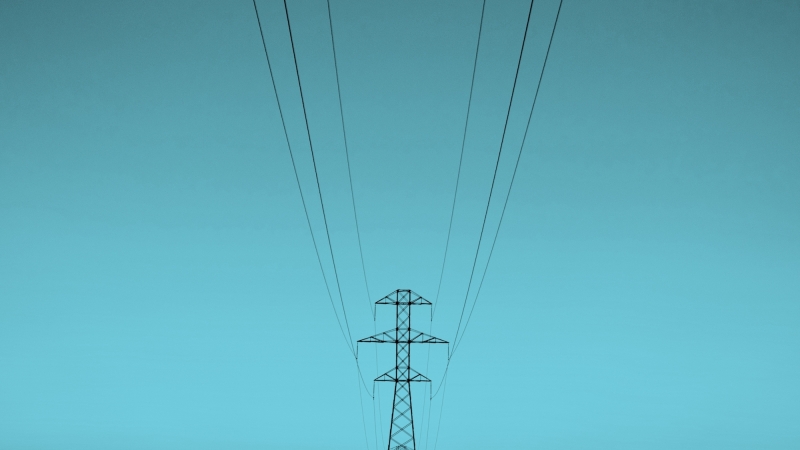Posted: 27th November 2019
Too many business leaders within utilities let their people and assets face the brunt of risk without the safety-net of effective contingency.
When we’re talking about multi-million-pound businesses that could be easily disrupted by extreme weather events (which are becoming increasingly common) – and when we consider the impact that such a disruption could have on the most vulnerable members of our society – the cost of not investing in contingency becomes far too great.
Even if the cost of contingency seems high, we should be seeing such investment as a way of insuring the business ahead of any peak period (winter and summer both bring their own challenges).
But effective contingency needn't cost the earth.
By making targeted investment in areas that will deliver the most impact, you can mitigate risk to your business while also improving its resilience to shock.
Facing up to Risk
Utilities businesses, from generators to intermediaries and everything in between, will be aware of the various risks that can severely impact their business and their customers. Frozen pipes, flooding and even man-made nightmares such as ‘fatbergs’ can cause disruption and cost millions.
And the incidence of these events is only increasing with time.
Infrastructure failures, inevitably, lead to spikes in customer contact – most of which will be more urgent and complicated than normal and result in the stretching of current resource. This makes resolving issues on the ground more difficult and taxing, and directly impacts the bottom-line of firms who find customers switching away from them in shows of frustration.
The last decade has seen 8% more rainfall flood our country, monster storms like the ‘Beast from the East’ impact every aspect of society and hundreds of thousands of people cut off from water and electricity with little to no communication from their over-stretched providers. The simple fact that bad weather insurance claims rose 290% in the first quarter of 2018 should be sign enough of the damage that extreme weather can cause.
But it’s not only infrastructure issues that can cause surges in complaints for utilities businesses.
Digital systems issues (for example, your company website or user portal going down, or a failed migration to an updated system) can be just as damaging for utilities businesses as they are within financial services.
And it doesn’t just have to be a negative event that results in a rise in customer contact either. Becoming suddenly more competitive on price than other suppliers may result in your business being flooded by a volume of customers you’re just not ‘kitted out’ to handle.
When something in the chain breaks, there are always severe knock-on effects for businesses and their customer contact functions. If these organisations can’t handle the surges and keep lines of customer communication open, a negative feedback loop is created that can quickly spiral out of control and cause further damage.
We have previously written about some of the issues that water suppliers, in particular, have to contend with – and the list is a long one. Ofwat’s 2018 Out in the Cold report detailed the water industry’s response to the ‘Beast from the East’ storm and required businesses under its scope to respond with reports of their own.
A common theme was immediately recognisable across almost all of these reports: suppliers need to invest more in contingency resource. This principle can very easily be extended to the entire utilities market – from energy and gas suppliers to telecommunications providers – and even to the travel sector. We all know the chaos that even a little ice or fallen leaves can have on rail travel times!
Avoid, Cope and Recover
Ofwat’s framework for building resilience remains an effective starting point for any business facing operational issues. Providers need to be able to “avoid, cope and recover” from all kinds of disruption. This simple mantra should be applied across all markets, not just water.
The UK’s utilities’ regulators expect businesses to prove they have the resilience not just to cope and recover from such issues but also avoid the dangers that lead up to these. To ‘avoid’ a disaster would require effective forward planning and stress-testing, perhaps going so far as role-playing potential ‘near-miss’ scenarios. Such preparations will help ensure staff, from the Board to front-line teams, understand how to deal with tasking situations.
Targets for investment
So, the question is: “how do we take practical action now, ahead of the next big event?”
The core of any contingency plan should be building up the capacity and capability of your business’ human resource. When a risk does crystallise, you will find that your business becomes rapidly stretched across disaster recovery, customer contact and, after the event, root cause analysis and remediation.
Communication
The Out in the Cold report highlighted the fact that, in the worst affected areas, 40% of customers impacted by water loss during the ‘Beast from the East’ received no communication from their provider and, when they did, this communication lacked timely, targeted or accurate information.
Customer communication, and the handling of complaints, becomes even more important in such situations. The interactions firms have with customers will also generally be more urgent, complex and difficult to deal with.
When a sudden upsurge in customer contact does occur, having a resourcing or outsourcing partner on hand that can take some of the load off your operation can prove to be invaluable.
Firms also need to take a proactive approach to reaching out to affected customers if they know an issue has taken place. Customers want to feel like their suppliers are not just being reactive to situations, but actively listening to them. Achieving this will require an investment in trained communicators, guided by fit-for-purpose procedures and armed with detailed customer information.
Building such a capability needn’t cost the earth. With a specialist resourcing partner like Huntswood, you can benefit from a truly agile model that can be flexed up and down according to need.
Back-up sites and technology
Equally as important as the people considerations are those around infrastructure. After all, if you can’t provide human resource with what they need to do their jobs, then you will still be at a loss.
This is where the basic ideas of ‘business continuity’ or ‘disaster recovery’ come into play. Your business, especially if there are environmental risks around your head office, would be better protected by having a warm ‘stand-by’ site on hand, as well as people to staff it.
Now, this doesn’t have to mean having an empty office in another nearby town, but businesses should make sure that, if the worst were to happen at ‘head office’, they have the option of putting supplementary resource or in-house teams into action elsewhere to cover any shortfall.
After all, no business should have ‘all of its eggs in one basket.’ Partnering with a third-party resource provider or outsourcer is really an incredibly effective way to ensure that risk is dispersed and the burden of operating during peak periods of disruption is shared.
If you do decide to outsource your customer contact functions, be sure that your partner also has appropriate business continuity measures in place.
Being ‘out of the game’, even for a few hours, can very easily result in a mass exodus of customers from your business to a competitor. In this regulated marketplace, in which all providers are selling more-or-less the same product, it is likely to be the business with the best, most consistent customer service that wins in the end.
Don’t let sudden, unexpected issues destroy your loyal customer base.
Advisory support
At critical times, the senior managers of your firm may be hard pressed to make the rapid, yet effective, decisions that are needed.
With so many layers of risk, customer considerations and operational issues at play, your business would be served well by bringing in additional advisory support. Whether this be in the form of specialists who can assist your Chief Operating Officer with cost-reduction and Chief Risk Officer with risk assessment, or customer service experts who can improve the output of customer contact teams, consultants can provide the assurance you need to not just survive an operational issue but thrive after it is resolved.
The dilemma resolved
In the end, being able to provide good customer service and assist them through impactful issues is critical.
Businesses always need to achieve a ‘balanced spend’ with a focus on maximising return and benefit for the customer. One of the best ways to achieve this is through effective outsourcing – partnering with a third party to ensure that all resource and infrastructure needs are met, even in times of crisis.
We understand that businesses want to develop cost efficiencies where they can, and we hope that this article has given you some ideas of where you can invest in contingency in the most cost-effective way possible.
With the appropriate level of fine-tuning, undertaken by crisis management experts with years of experience (and plenty of bitter winters and boiling summers ‘under their belt’), your business will be able to mitigate risk without breaking the bank.
Huntswood is your ideal partner for business continuity and risk management within utilities. With decades of experience assisting some of the biggest names in the business, our specialist resourcing, outsourcing and advisory expertise can help you achieve resilience and maximise the potential of your operations.
Contact the team today to learn more about how we can protect your business and its customers.








